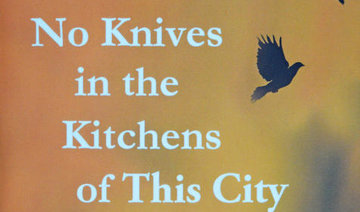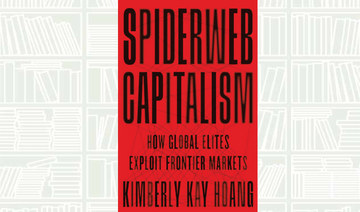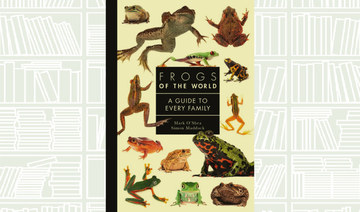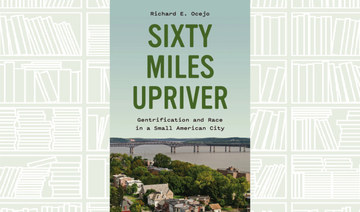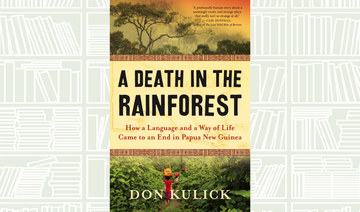The rise of smartphones and social media has enabled the expansion of the sharing economy, a phase during which the likes of Uber and Airbnb were born.
The power of these entrepreneurial ventures is continuously rising. Airbnb has already exceeded 10 million guest stays and Uber continues to grow despite its current failings. No matter how bad the PR is getting for Uber, consumers do not seem to care. As long as the company’s ride hailing app continues to outperform rival apps, Uber will continue to dominate the market.
Brad Stone has covered the Silicon Valley as a journalist for more than fifteen years. After his book “The Everything Store: Jeff Bezos and the Age of Amazon,” which won the Financial Times and Goldman Sachs Business Book of the Year Award in 2013, he is back with an enthralling account of how Uber and Airbnb came to be and how a new generation of entrepreneurs are changing the way we live in “The Upstarts: How Uber, Airbnb, and the Killer Companies of the New Silicon Valley Are Changing the World.”
Travis Kalanick and Brian Chesky, the young CEOs behind Uber and Airbnb respectively, are part of a new breed of tech leaders who are different from the previous generation of introverted innovators such as Bill Gates, Larry Page and Mark Zuckerberg.
“Instead, they are extroverted storytellers, capable of positioning their companies in the context of dramatic progress for humanity and recruiting not only armies of engineers but drivers, hosts, lobbyists and lawmakers to their cause” Stone wrote in the book.
Chesky grew up in Niskayuna, New York, in a middle-class family. Joe Gebbia, who co-founded Airbnb with Chesky, was born in Atlanta, Georgia. The pair met in classes at the Rhode Island School of Design and became firm friends.
After Gebbia graduated, he went to San Francisco and asked Chesky if he would like to come and share the rent of his apartment. Chesky told Gebba that if he made the move, he would keep a new part-time teaching job in Los Angeles but would spend the weekends in San Francisco. For that reason, he asked Gebbia if he could rent the couch in the living room for $500 a month instead of renting a whole room. Gebbia replied that Chesky needed to be fully committed or else he would have to give up the apartment. Just as Chesky decided to make the move, Gebba sent him the e-mail that would change their lives: “I thought of a way to make a few bucks, turning our place into a designer’s bed and breakfast, offering young designers who come into town a place to crash during the four-day event (a design conference), complete with wireless Internet, a small desk place, sleeping mat and breakfast each morning. Ha!”
It took the pair three days to put together the first Airbedandbreakfast.com website using free tools available online. The first guest to use Airbedandbreakfast.com was Amol Surve. He was greeted at the door by the site’s co-creator Gebbia. Surve, who came from Mumbai, had use the Internet to rent an airbed for $80 a night because all the hotels in the area were either booked or too expensive.
He did not know what to expect but soon loved the experience of living in a temporary home. Two other guests also used the apartment during the design conference. After the three travelers left, the co-founders were not only able to pay their rent but they were also touched by the friendships they had made with their guests.
For a year, nothing happened. Chesky and Gebbia looked for investors but “very few people even met with us, they considered us crazy,” Chesky admitted. However, by 2010, Airbnb covered 8,000 cities.
While Chesky and Gebbia were working on better versions of what was still known as Airbedandbreakfast.com, Garret Camp, a Canadian entrepreneur, had just sold a website discovery tool, StumbleUpon, to eBay for $75 million. He was rich and living the good life but he had one problem — his Mercedes-Benz sports car. It stayed in the garage and he barely used it as he found driving in San Francisco to be too stressful. He became obsessed with the idea of an on-demand car service that passengers would be able to track via a map on their phones. He soon found out about the German word “Uber” and settled for the name “UberCab.”
On Nov. 17, 2008, Camp registered UberCab as an LLC in California. In December, on his way to attend LeWeb, a high-profile technology conference in Paris, he stopped in New York to meet Oscar Salazar, a friend. He shared his idea with Salazar who had also experienced problems with cabs in Mexico, Canada and France. “I don’t know if this is a billion-dollar company but it’s definitely a billion-dollar idea,” Salazar said before developing a prototype for Camp.
When UberCab looked for capital, most Silicon Valley investors passed on the deal, just as they had with Airbnb. Eventually, Uber gathered $1.3 million and proceeded to make history.
Uber, unlike Airbnb which had become global as soon as it was launched, had to enter each market on an individual basis. Each city was different and presented unique challenges. One of the greatest problems that Uber faced was the fact that it used contract drivers instead of full-time employees. This triggered endless controversies linked to background checks, proper insurance and the safety of both the drivers and the riders using its service.
By the end of 2016, Uber introduced a new type of work flexibility for its drivers and it also lowered the price of its fares. These measures boosted Uber’s business. In 2014, Uber booked 200 million rides while in 2016, the total number of rides reached one billion and six months later, the number had already doubled.
By the end of 2016, Airbnb and Uber had thousands of employees and offices around the world.
Stone gives us a detailed account of how this new breed of CEO — bold, ruthless and resourceful — is making a lasting impact on the way we live and travel.
Book Review: How Uber and Airbnb are changing the world
Book Review: How Uber and Airbnb are changing the world
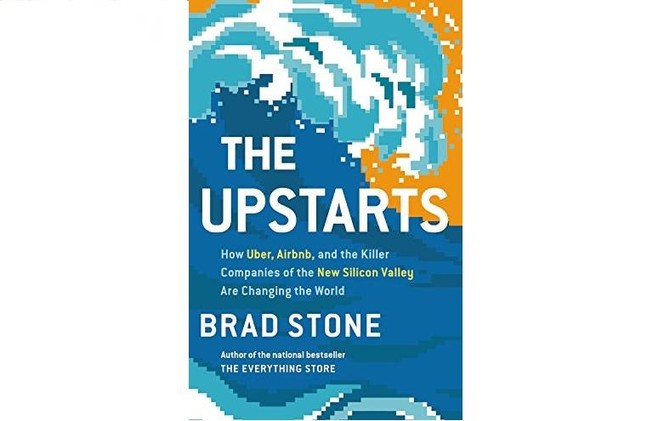
What We Are Reading Today: ‘The Little Book of Beetles’
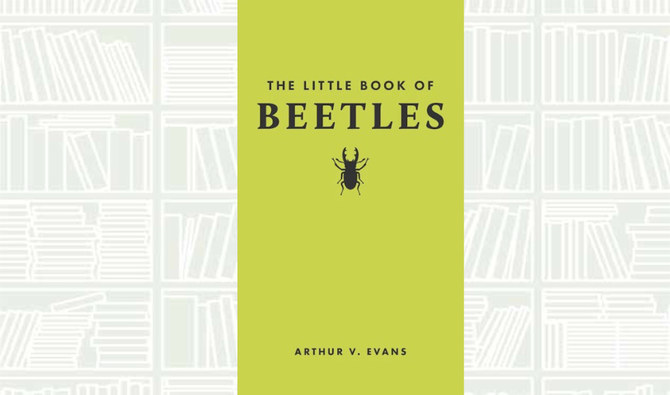
Author: ARTHUR V. EVANS
Packed with surprising facts, this delightful and gorgeously designed book will beguile any nature lover. Expertly written and beautifully illustrated throughout with color photographs and original color artwork, “The Little Book of Beetles” is an accessible and enjoyable mini-reference about the world’s beetles, with examples drawn from across the globe.
It fits an astonishing amount of information in a small package, covering a wide range of topics — from anatomy, diversity, and reproduction to habitat and conservation.
What We Are Reading Today: Spiderweb Capitalism: How Global Elites Exploit Frontier Markets
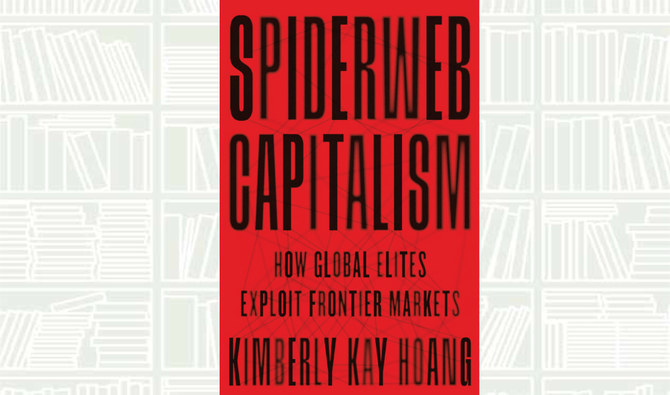
- Hoang reveals the strategies behind spiderweb capitalism and examines the moral dilemmas of making money in legal, financial, and political gray zones
Author: Kimberly Kay Hoang
In 2015, the anonymous leak of the Panama Papers brought to light millions of financial and legal documents exposing how the superrich hide their money using complex webs of offshore vehicles. Spiderweb Capitalism takes you inside this shadow economy, uncovering the mechanics behind the invisible, mundane networks of lawyers, accountants, company secretaries, and fixers who facilitate the illicit movement of wealth across borders and around the globe.
Kimberly Kay Hoang traveled more than 350,000 miles and conducted hundreds of in-depth interviews with private wealth managers, fund managers, entrepreneurs, C-suite executives, bankers, auditors, and other financial professionals. She traces the flow of capital from offshore funds in places like the Cayman Islands, Samoa, and Panama to special-purpose vehicles and holding companies in Singapore and Hong Kong, and how it finds its way into risky markets onshore in Vietnam and Myanmar.
Hoang reveals the strategies behind spiderweb capitalism and examines the moral dilemmas of making money in legal, financial, and political gray zones.
Dazzlingly written, Spiderweb Capitalism sheds critical light on how global elites capitalize on risky frontier markets, and deepens our understanding of the paradoxical ways in which global economic growth is sustained through states where the line separating the legal from the corrupt is not always clear.
What We’re Reading Today: Work Life Well-lived
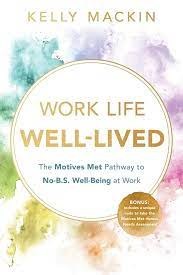
Author: Kelly Mackin
This book will disrupt how you think about creating your best work life and workplace and give you a road map to get you there, says a review published on goodreads.com.
Through years of research and truth-finding, Kelly Mackin and her company, Motives Met, have discovered a completely new mindset and approach around what well-being at work is all about, how to get there, and why it’s so important that we do get there.
This book is a personal guide and a call to action for a shift in our approach to work.
What We Are Reading Today: Natural Magic

Author: Renee Bergland
Emily Dickinson and Charles Darwin were born at a time when the science of studying the natural world was known as natural philosophy, a pastime for poets, priests, and schoolgirls.
The world began to change in the 1830s, while Darwin was exploring the Pacific aboard the Beagle and Dickinson was a student in Amherst, Massachusetts.
“Natural Magic” intertwines the stories of these two luminary 19th-century minds whose thought and writings captured the awesome possibilities of the new sciences and at the same time strove to preserve the magic of nature.
What We Are Reading Today: Frogs of the World: A Guide to Every Family
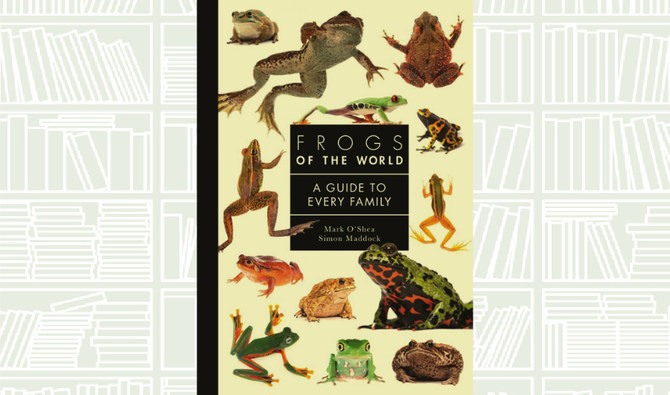
Authors: Mark O’Shea & Simon Maddock
With more than 7,600 known species, frogs exhibit an extraordinary range of forms and behaviors, from those that produce toxins so deadly that they could kill a human many times over to those that can survive being frozen in ice.
“Frogs of the World” is an essential guide to this astonishingly diverse group of animals. An in-depth introduction covers everything from the origins and evolution of frogs to their life cycles and defense strategies.



